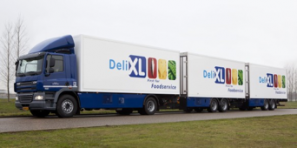Connect local transportation demands and supply
April 24, 2013
Contributor: Anne de Feijter, Amersfoort
Workshop: Resource efficiency – CO2 reduction / Small scale transportation – Food hub/logistic platform
Develop synergies between parties who have people or goods (such as urban food) that need to be transported within the city/region and parties that supply (sustainable) ways of transportation.
Many transportation flows are present in and around the city of Amersfoort.
Elderly and people with disabilities are begin transported in minibuses to the hospital or to their day care activities. Children are brought to special education schools every day. The local Centre of Nature and Environmental Education is weekly handing out approximately 25 boxes with educational materials to the 74 primary schools in Amersfoort. Food is being distributed to restaurants, hospitals, residential homes, etc.
Urban food is being delivered in boxes at the homes of citizens in Amersfoort in mini buses. Some restaurant owners pick up their products at the farmers themselves (Daphne in de Kas). Farmers bring and sell their own products four times a year at the Urban Food Markets ‘Taste of the Region’. The company ‘Willem & Drees’ delivers vegetables and fruits that are grown in and around Amersfoort to supermarkets and shops.
So, urban food is being transported in many different ways.
Initiative:
The Environmental Department of the Municipality of Amersfoort has taken the initiative to organize a meeting to bring together supply and demand in the field of urban transportation. This meeting took place at the 26th of march 2013.
A wide variety of parties were invited to an exploratory conversation; commercial transportation businesses, food delivery companies, restaurant owners, non-profit sustainability foundations, a consulting firm specialized in sustainable transportation policies for businesses, the local bike shop and bike courier, etc.
Goal of this meeting: to get acquainted and to explore the possibilities of developing a sustainable way to transport local/regional goods by working together and combining different transportation flows.
The intention of the municipality of Amersfoort was: to connect supply and demand, to guard the aspect of sustainability during the first meeting, to facilitate follow-up actions or meetings (limited) and ultimately leave it to the market parties themselves.
Results:
The conclusions of the first meeting are:
– All parties are in favour of sustainable transportation and are open to synergies, shared use and cooperative activities.
– Transportation can be more sustainable by preventing, shortening or changing transport movements and by more sustainable transportation means (electric vehicles).
– There are local initiatives present that can strengthen each other.
– There is a need for further research into the desired transport movements and the local parties that can offer them.
Follow-up actions:
1) Bringing forward concrete initiatives now. Think big, act small.
2) Develop a broader view of a city-wide marketplace for sustainable mobility. Create an overarching plan to combine investment budgets, to use existing developments more efficient and to analyze opportunities and barriers.
A next meeting is being organised at the 24th of april.
The role of the local government in this initiative:
- organizing a meeting without a preconceived plan with comprehensive goals;
- inviting a multitude of different local parties;
- have an open talk about the interests of the parties present and look for win-win situations;
- Clarify the interest of the local government in the same open way of communicating;
- Make subgroups for follow-up actions. Some parties prefer quick action, others want to do research first.
- Let go on time. Be clear from the start about the limited facilitation the municipality can offer. How can you monitor the out-come?
To what extent should a local government interfere in the local transport flows? How far should a municipality go; when to let go?

